Filter by
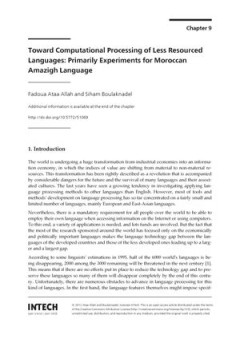
Chapter Measures of Pseudorandomness
In the second half of the 1990s Christian Mauduit and András Sárközy [86] introduced a new quantitative theory of pseudorandomness of binary sequences. Since then numerous papers have been written on this subject and the original theory has been generalized in several directions. Here I give a survey of some of the most important results involving the new quantitative pseudorandom measures o…
- Edition
- -
- ISBN/ISSN
- 9783110283600
- Collation
- -
- Series Title
- -
- Call Number
- -
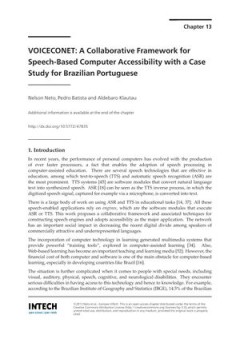
Voiceconet
VOICECONET: A Collaborative Framework for Speech-Based Computer Accessibility with a Case Study for Brazilian Portuguese
- Edition
- -
- ISBN/ISSN
- 9789535108313
- Collation
- -
- Series Title
- -
- Call Number
- -

Toward Computational Processing of Less Resourced Languages
Toward Computational Processing of Less Resourced Languages: Primarily Experiments for Moroccan Amazigh Language
- Edition
- -
- ISBN/ISSN
- 9789535108528
- Collation
- -
- Series Title
- -
- Call Number
- -
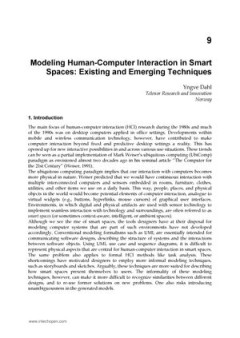
Modeling Human-Computer interaction in Smart Spaces
Modeling Human-Computer Interaction in Smart Spaces: Existing and Emerging Techniques
- Edition
- -
- ISBN/ISSN
- 9789537619145
- Collation
- -
- Series Title
- -
- Call Number
- -

Die virtuelle Dimension
Large parts of our culture are characterised by a blurring of corporeal and virtual realities. Computer industry has opened up all sorts of hybrid spaces and has itself, in turn, become a space for uncountable fantasies and expectations. Which are the principles of cultural order depicted by this desire commonly termed cyberspace? In offering novel narratives of modern architecture the author e…
- Edition
- -
- ISBN/ISSN
- 9783205993483
- Collation
- -
- Series Title
- -
- Call Number
- -

Re-engineering the Uptake of ICT in Schools
Information Systems and Communication Service; Education, general
- Edition
- -
- ISBN/ISSN
- 9783319193656
- Collation
- -
- Series Title
- -
- Call Number
- -

Corpus Linguistics and 17th-Century Prostitution
- Edition
- -
- ISBN/ISSN
- -
- Collation
- -
- Series Title
- -
- Call Number
- -
- Edition
- -
- ISBN/ISSN
- -
- Collation
- -
- Series Title
- -
- Call Number
- -
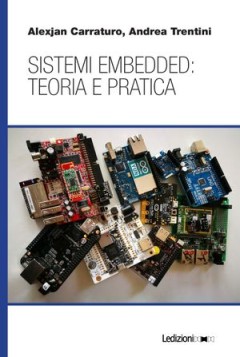
Sistemi Embedded
The explosion of the market linked to mobile telephony, automation, home automation, infotainment systems and automatic driving, the design of drones and 3D printers have brought to the fore the interest in "embedded" technologies. In recent years there has been a progressive increase in the demand for skills in this sector, both in the professional / industrial area and for the community of en…
- Edition
- -
- ISBN/ISSN
- 9788867056583
- Collation
- -
- Series Title
- -
- Call Number
- -
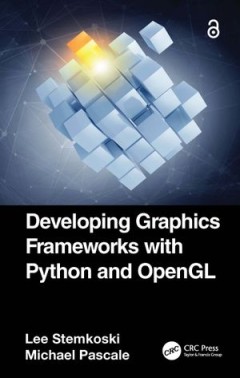
Developing Graphics Frameworks with Python and OpenGL
Developing Graphics Frameworks with Python and OpenGL shows you how to create software for rendering complete three-dimensional scenes. The authors explain the foundational theoretical concepts as well as the practical programming techniques that will enable you to create your own animated and interactive computer-generated worlds.You will learn how to combine the power of OpenGL, the most wide…
- Edition
- Ed. 1
- ISBN/ISSN
- 1000407950, 9781000407952
- Collation
- -
- Series Title
- -
- Call Number
- -

The Mobile Commerce Prospects
Mobile Commerce has gained increasing acceptance amongst various sections of the society in previous years. The reasons for its growth can be traced back to technological and demographical developments that have influenced many aspects of the socio-cultural behaviour in today's world. The need (and/or wish) for mobility seems to be the driving force behind Mobile Commerce. The launch of UMTS te…
- Edition
- -
- ISBN/ISSN
- 9783937816319
- Collation
- -
- Series Title
- -
- Call Number
- -
 Computer Science, Information & General Works
Computer Science, Information & General Works  Philosophy & Psychology
Philosophy & Psychology  Religion
Religion  Social Sciences
Social Sciences  Language
Language  Pure Science
Pure Science  Applied Sciences
Applied Sciences  Art & Recreation
Art & Recreation  Literature
Literature  History & Geography
History & Geography